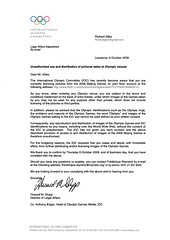To tweet is narcissistic! Found this via ComputerWorld
A Rutgers University study shows that 80% of Twitterers are largely tweeting about themselves – what they’re doing, their feelings, their opinions and other personal information. Only 20% of the 350 Twitter users surveyed are sharing non-personal information and they tend to have larger social networks and interact more with their followers.
Kind of obvious but interesting to have it based in a rigourous study. The insight that twitter is a narcissistic tool is hardly new. Back in February Times Online had an article A Load of Twitter which discussed the phenomenon. Those negative to the technology want to see it based in insecurity and lack of self esteem:
“We are the most narcissistic age ever,” agrees Dr David Lewis, a cognitive neuropsychologist and director of research based at the University of Sussex. “Using Twitter suggests a level of insecurity whereby, unless people recognise you, you cease to exist. It may stave off insecurity in the short term, but it won’t cure it.”
But then there are those who understand the tech better and see that it is not (only) about that. Its a dialogue, a conversation and like most conversations it is banal and shallow
Is that why tweets are often so breathtakingly mundane? Recently, the rock star John Mayer posted a tweet that read: “Looking for my Mosely Tribes sunglasses.” Who wants to tell the world that? “The primary fantasy for most people is that we can be as connected as we were in the womb, a situation of total closeness,” says de Botton. “When people who are very close are talking, they ‘twitter away’: ‘It’s a bit dusty here’ or ‘There’s a squirrel in the garden.’ They don’t say, ‘What do you think of Descartes’s second treatise?’ It doesn’t matter what people say on their tweets — it’s not the point.”
And these views are fine if this is what you want to focus on. But twitter is much more. What is missed is the great use of twitter as a tool of social coordination and information spreading. It only seems like narcissism since people don’t “get” what twitter is about.
Social coordination: When someone tweets that they are attending a conference, sitting on a train or in an airport it could be seen as narcissism since the focus is on the twitterer. But this is one dimensional and forgets that the act of tweeting where you are fills an important second function. It lets others find you. Talking from my own experience I (narcissistic, moi?) regularly coordinate physical meetings via twitter on trains or at conferences. Emailing an acquaintance places a social burden on the recipient – a tweet announcing where I am is an open invitation.
Information spreading: A large amount of tweets contain links to and information about web pages, pictures, articles and books. Of course a tweet stating that the user is reading this or that book is narcissistic but the very fact that a user I follow mentions the information is a recommendation. It is valuable information that often is too short to be spread in other ways (via blogs for example) or too banal to merit direct contact via email or telephone. In addition to which the tweet can be ignored without breaking any social norms.
Twitter is a tool that supports social contacts and much of what we do in social interaction is focused on the self, but it is seen as an acceptable narcissism and therefore not defined as such. The only difference is that twitter is “new” and therefore can be seen as a bad form of self reflection… narcissism. In time the social norms may change in this area and twitter may become an acceptable form of self referencing. Maybe it won’t.
But if it is narcissistic to be sociable then I am a happy narcissist. Follow me (klang67) on Twitter!
Update: More on the pointlessness of Twitter
From Pearanalytics research shows that 40% of twitter is pointless babble, read their whitepaper here.
Seth Finkelstein in The Guardian Twitter is a sucker’s game that only serves the needs of a tiny elite.
Sysomos Inside Twitter study with in-depth data found, amongst other things, that 24% of Tweets are created by bots.
And in defense of twitter from BLDG BLOG comes How the Other Half Writes: In Defense of Twitter




